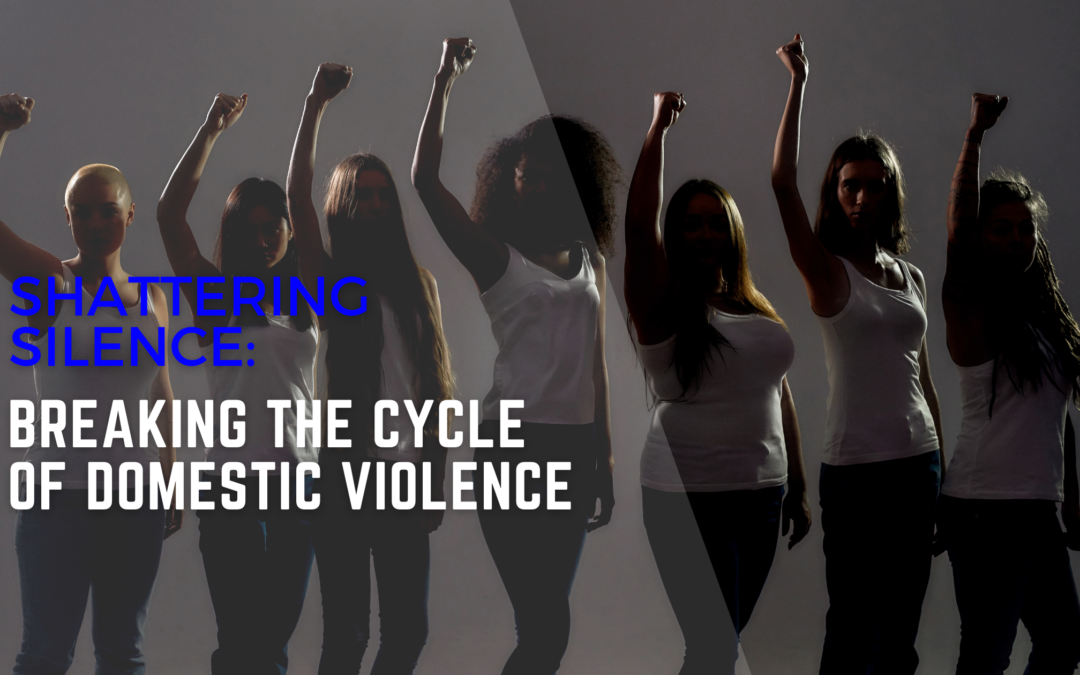October is Domestic Violence Awareness Month—a time to shine a light on an issue that affects millions of people worldwide. Domestic violence is more than physical harm; it’s an environment of control, manipulation, and fear. For many survivors, the lasting impact goes far beyond the bruises—it’s the emotional scars, the constant anxiety, and the paralyzing fear that linger long after the abuse has ended.
This post will explore the realities of domestic violence, the power of fear as a weapon of control, and actionable steps toward healing and empowerment.
The Reality of Domestic Violence
Domestic violence is more common than many realize. In the United States alone:
- 1 in 3 women have experienced some form of intimate partner violence (IPV) in their lifetime.
- Every minute, nearly 20 people are physically abused by an intimate partner, amounting to more than 10 million people annually.
Furthermore, the COVID-19 pandemic exacerbated this crisis, with domestic violence incidents increasing by 8.1% during lockdown periods. This rise in abuse reflects the underlying stressors—like isolation, unemployment, and financial strain—that often trigger or worsen abusive behaviors. Among those most vulnerable are young women aged 18-24, who face the highest risk of violence from intimate partners.
For pregnant individuals, domestic violence can have life-threatening consequences, with approximately 324,000 pregnant individuals experiencing abuse annually in the U.S. This startling statistic underscores the need for urgent action and awareness.
“The scars you can’t see are the hardest to heal.” – Astrid Alauda
Fear: The Weapon of Control
Abusers often use fear as their most powerful weapon. They create an environment where you’re:
- too scared to leave
- deeply afraid to speak out
- terrified to trust yourself
Fear keeps you isolated, making you feel as though you’re alone in your struggle. But the reality is that you’re not alone. Millions of people have endured similar experiences, and there is a community of survivors and advocates ready to support you. The first step to overcoming fear is acknowledging that it exists—and understanding that it’s been used as a tool to keep you from realizing your strength.
Overcoming Fear After Domestic Violence
If you’ve experienced domestic violence, you may feel as though fear has become an ingrained part of your daily life. It’s understandable—abuse conditions you to believe that you must live in a constant state of fear. But it’s crucial to remember that fear does not define you, and it certainly doesn’t have to dictate your future.
This Domestic Violence Awareness Month, we encourage you to take a stand against fear. Embrace the idea that you don’t have to live this way anymore. Whether you’re still in an abusive situation or you’ve already broken free, the journey toward healing begins when you start reclaiming your power.
Breaking the Silence: A Path to Freedom and Empowerment
Breaking the silence is the first and most critical step toward freedom. It is essential for victims to realize that you have the power to say, ‘This is not how my story will end.’ Domestic violence does not define who you are. Leaving an abusive situation is not just an escape—it’s a reclamation of power and self-worth. Healing may not be linear, but every step forward is a victory.
One of the most challenging aspects of recovering from domestic violence is rediscovering your inner strength. After years of being told that you’re weak, it’s easy to forget how powerful you truly are. But here’s the thing: you survived. You’ve endured unimaginable pain, and you’re still here. That’s a testament to your resilience and inner strength. It’s time to recognize that power within yourself and use it to move forward. The scars you carry—whether emotional or physical—are not signs of weakness. They are symbols of survival.
5 Steps Toward Building a New Future
As you move through the healing process, remember that it’s okay to seek support. Healing is not linear, and you don’t have to navigate this journey alone. Here are five actionable steps to guide you:
- Acknowledge Your Feelings: Accept and recognize your emotions as valid. It’s essential to understand that healing is a process.
- Seek Support: Reach out to friends, family, or professionals. Engaging in therapy or support groups can provide valuable guidance and connection.
- Establish Healthy Boundaries: Learn to set and maintain boundaries that protect your well-being, allowing you to foster healthier relationships.
- Create a Self-Care Routine: Prioritize activities that nurture your mind, body, and spirit, such as exercise, mindfulness, and hobbies that bring you joy.
- Set Realistic Goals: Break down your long-term aspirations into smaller, achievable steps. Celebrate your progress along the way to build confidence and motivation.
These steps can serve as a roadmap on your journey toward healing and empowerment. Embrace each step, knowing that you are moving forward with strength and resilience.
Embracing Strength and Healing: Together We Rise
This Domestic Violence Awareness Month, let’s break the silence, confront the fear, and empower ourselves and each other. You are more than your trauma. You are more than your fear. And most importantly, you are not alone.
Take the step today to embrace your strength, own your story, and let go of fear. Support systems exist to help you break free, rebuild, and reclaim your life. Together, we can create a future where survivors are celebrated for their resilience and courage. You are powerful, and your scars are proof of that.
Domestic Violence Resources
If you or someone you know is in an abusive relationship, help is available. Please reach out to the National Domestic Violence Hotline at 1-800-799-7233 or visit www.thehotline.org.
Ready to take the next step? Schedule a free discovery call to see how we can help you on your journey to healing and empowerment!


Recent Comments